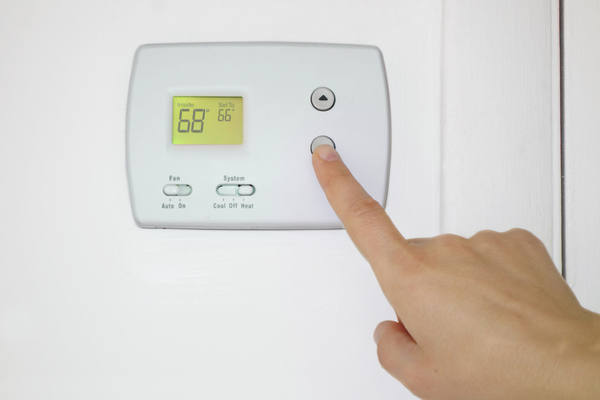When the dreaded cold months of winter arrive, it means many homeowners are put in a difficult conundrum to keep their homes warm without breaking the bank, and staying warm is becoming increasingly expensive.
Saving money can be as easy as setting your thermostat. But what is the ideal temp? Is there such a thing as setting it too low? And do you have to sacrifice comfort for cost savings? The answers may surprise you.
Set your Thermostat to 68 Degrees
Unless you live alone, you’ve probably engaged in thermostat wars with a loved one or roommate who simply prefers to keep your residence at a different temperature. But experts have helpful recommendations for the proper home temperature in the winter.
That magic number? 68 degrees Fahrenheit, according to the Department of Energy. But if that’s too specific, anywhere around 70 degrees is a good target when it gets cold, Ram Narayanamurthy, deputy director of the U.S. Department of Energy’s Building Technologies Office, told USA Today. “A home that’s at 70 degrees is quite comfortable,” Narayanamurthy said.
Turn the Heat Down when you’re Away
While 70 degrees is the ideal number, it’s unwise to set your thermostat to one temperature and never change it. Lower temperatures may be ideal when sleeping at night or when you’re away from your home, Narayanamurthy cautioned.
Narayanamurthy said he usually sets his at 64 degrees if he leaves his home for an extended period of time, though everyone’s comfort levels may be different. “You don’t want your heater turning on all the time when no one’s at home,” he said.
Don’t set your Thermostat Too Low
Penny-pinchers may be tempted to set their thermostat at bracing levels and survive the winter by bundling up in layers or piling on blankets.
While you’d have to set your home at a pretty low temperature for it to become a health risk, Narayanamurthy warns against going below 60 degrees. “You have to keep it really low to really get into a health concern,” he said. “What you want to do is keep it at a reasonable temperature that’s not chilly.”
The World Health Organization (WHO) recommends keeping indoor temperatures between 64 and 75 degrees for healthy people. But for those who are very young, elderly or who have health problems, the minimum temperature shouldn’t dip below 68 degrees, the organization says.
Consider Investing in a ‘Smart’ Thermostat
Smart thermostats enabled with Wi-Fi are becoming increasingly popular among many Americans, especially those who have replaced their furnace in recent years, Narayanamurthy said. In fact, he estimated that up to 33% of households now have them.
Because many can connect to smartphones via mobiles apps, smart thermostats provide the option for homeowners to program their thermostat while they’re away from home or even set a schedule. Some advanced options are capable of recognizing a homeowner’s pattern and adjusting the temperatures at certain times or even in certain rooms of the house.
The average Energy Star certified smart thermostat can save about 8% of a homeowner’s annual heating and cooling bills, according to Consumer Reports. “There’s a proven energy savings from a smart thermostat,” Narayanamurthy said. “The aim is to make it more seamless to make your home more comfortable.”
Space Heaters can help, but Use with Caution
Many homeowners may be tempted to rely on fireplaces, space heaters, electric blankets and wood burning stoves to keep warm in the winter. According to Direct Energy, these types of secondary heating sources can help to slash costs since they offer heating to a more targeted area of your home at a fraction of the cost of cranking up the thermostat.
But many of these options come with their own safety risks and similarly require routine maintenance, care and even replacement. Once a fire hazard, modern electric space heaters are much safer than they used to be with built-in safety features that turn the heaters off if they tip over, overheat, or have been left turned on for too long.
—
Photo Credit: zimmytws / Shutterstock.com
